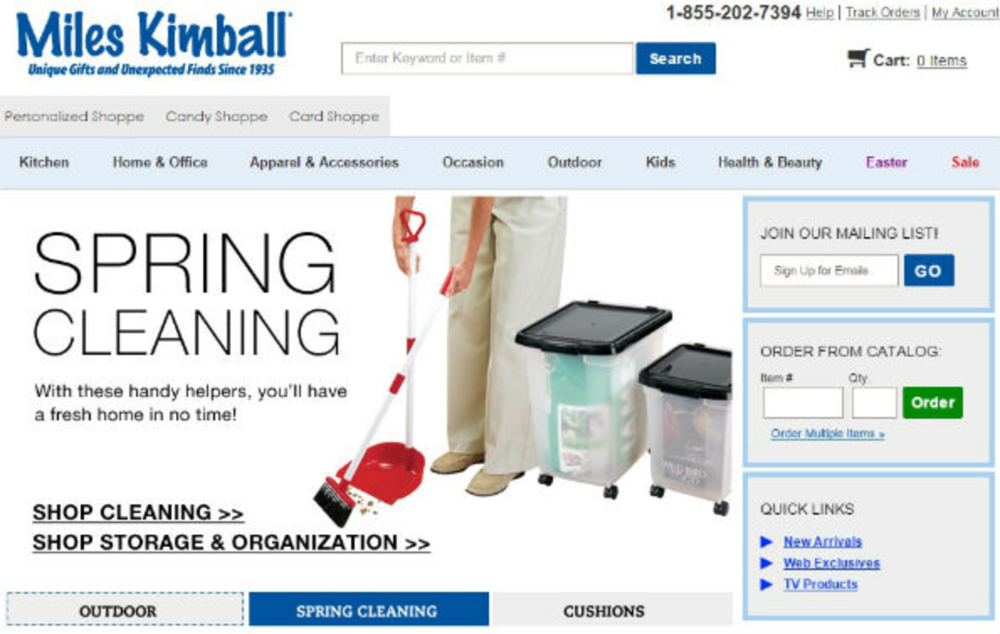Not many marketing executives have an opportunity to revitalize a legacy brand. On a daily basis, however, all marketers must challenge conventional wisdom and status quo thinking, regardless of whether they work in a venerable 80-year-old company or a frisky start-up.
Since stepping into her role of vice president of marketing and business development for Silver Star Brands, Kathy Hecht has passionately addressed both of these challenges. “It was the perfect opportunity to breathe new life into a great legacy brand,” says Hecht, who notes that the company’s revenue increased last year despite the fact that the marketing function reduced its promotions spending by about 7%. “These are kind of results that you get when you think squarely about customers and organize them into actionable segments.”
Honoring the legacy with a new identity
Silver Star Brands emerged, so to speak, in October 2013 as the new name for Miles Kimball Company, a cataloger founded in 1934. That’s when Mr. Kimball hit upon the profitable idea that consumers like to buy products personalized with their name. The company rebranded as Silver Star Brands to reflect its evolution as a multi-brand, multichannel direct-to-consumer company.
The company’s five health, wellness, gift, and household products brands are targeted to women ages 50 and above and reach 120 million U.S. households through a database of more than 24 million consumers. Thirty-four percent of customers currently order products via phone, 34% do so via mail order, and 32% via the Internet.
“We’ve begun the journey of becoming much more digital,” Hecht says. A key to progressing on this journey, she emphasizes, is hiring and developing the right marketing team. One of her marketing team’s primary objectives on this initial leg of the transformation is to distill complex legacy processes into straightforward, customer-focused business problems to be solved.
For example, shortly after stepping into her role Hecht suspected that Silver Star was sending out too many catalogs. This suspicion became a hypothesis—we are mailing too many catalogs to customers who have no intention of buying products—that she and her team investigated through the same three approaches they apply to other legacy activities:
Think differently: At the most strategic level, Hecht exhorts her marketers to put customers, not marketing campaigns, at the center of their thinking. “‘Where is the customer at this point in time? How many times are we talking to her?’” Hecht says. “I want our people asking those questions rather than, ‘What’s my cutoff for the number of people I send this catalog to?’” Hecht also has committed to replacing a cost mind-set with a revenue and profit mind-set. “We’re looking for improvements with a positive attitude,” Hecht says, “because every problem we find means there’s an opportunity for a revenue or profit improvement.”
Analyze differently: For years Silver Star, like many direct-to-consumer companies, relied on complex algorithm-based models to determine which consumers qualified for catalogs. Thinking more about customer behavior and less about campaigns led to a stripped-down analysis of customer value (e.g., analyzing profit per customer against revenue per customer). In doing so, Hecht’s team discovered that 50% of new customers place orders in response to the second or third catalog they receive; fewer than 9% of new customers place their first order after receiving their eighth catalog. Yet, hundreds of thousands of consumers who did not buy after receiving their eighth catalog were still receiving those books in the mail—the result of the company using 100 different models to determine which consumers qualified to receive a catalog. “We had too many instances where someone barely qualified for numerous catalogs,” Hecht says. “We were wasting money.”
Act differently: The actions that follow these aha moments are, of course, crucial. “We’ve identified nearly 1 million names that we can pull from catalog circulation,” Hecht reports. “And we’re going to reinvest that money in our digital acquisition strategy.” Another outcome action involved ceasing postcard mailings after the company’s marketers realized that low-profit, low-revenue customers who had been removed from catalog mailings were still receiving postcard pitches.
“Over time, every marketing function can fall victim to its own process blinders,” Hecht adds. “When that occurs, you have to start asking basic questions about performance, cost, and profit.” The answers to those questions are what revitalize legacy brands.








